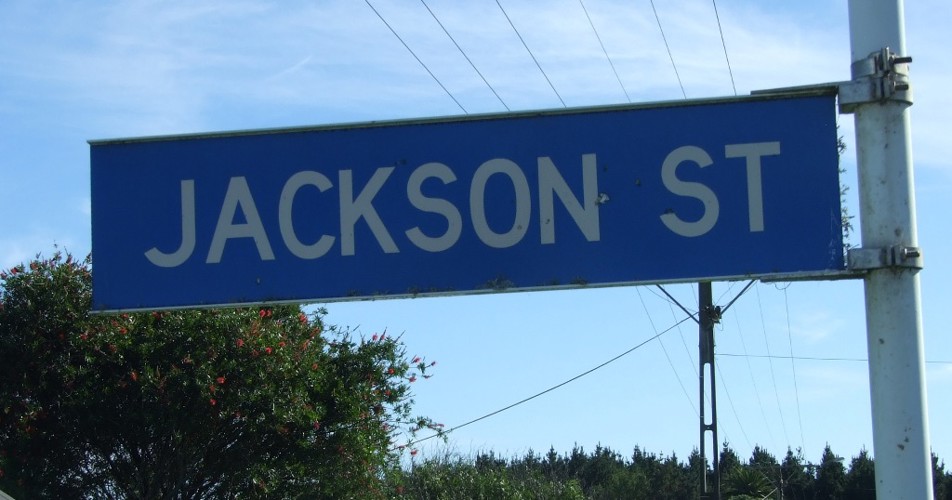 Jackson Street sign (2012). Mike Gooch. Word on the Street image collection.
Jackson Street sign (2012). Mike Gooch. Word on the Street image collection.
 Jackson Street sign (2012). Mike Gooch. Word on the Street image collection.
Jackson Street sign (2012). Mike Gooch. Word on the Street image collection.
A reminder of the wars over land in Taranaki, Jackson Street in Waitara takes its name from the lieutenant killed at No. 3 Redoubt at Huirangi in 1861.
Lieutenant Denis Jackson was attached to the 40th (2nd Somersetshire) Regiment of Foot, an infantry regiment of the British Army.
The 40th served in the British colonies. First posted to New South Wales, the regiment transferred to India, taking part in the capture of Karachi. The regiment remained in occupation until 1841, entering Afghanistan during the First Anglo-Afghan War. Back in India, they fought at the Battle of Maharajpore.
The regiment returned to Australia in 1852 and remained until 1860, serving in Victoria, where its troops were used to suppress the 1854 Eureka rebellion of miners at Ballarat. Twenty seven miners died, and the insurgents were accused of treason.
From 1860 until 1865, the regiment took part in the Taranaki and Waikato campaigns, during the New Zealand Wars.
Jackson survived the battle at Puketakauere pā in June 1860, a conflict that left 29 of his fellows dead and 33 wounded.
In September 1860, Lieutenant Jackson was among men of the 40th and naval brigade who attacked and destroyed the pa at Huirangi. No. 3 Redoubt was built on the site.
Lieutenant Jackson was present at the attack on Māhoetahi in November 1860.
Work commenced to enlarge Redoubt No. 3 at Huirangi. Before dawn on the morning of 23 January, 1861, Jackson emerged from his tent to fire his pistol at Māori warriors approaching the redoubt. In the answering fire, Lieutenant Jackson "fell back mortally wounded, with a ball through the head".
A memorial to Lieutenant Jackson can be found on the gravestone of his fellow officer Lieutenant Brooke, who is buried at the Waitara Historic Cemetery. Jackson was buried at St Mary's Cathedral in New Plymouth.
This story was originally published in the Taranaki Daily News.
Please do not reproduce these images without permission from Puke Ariki.
Contact us for more information or you can order images online here.